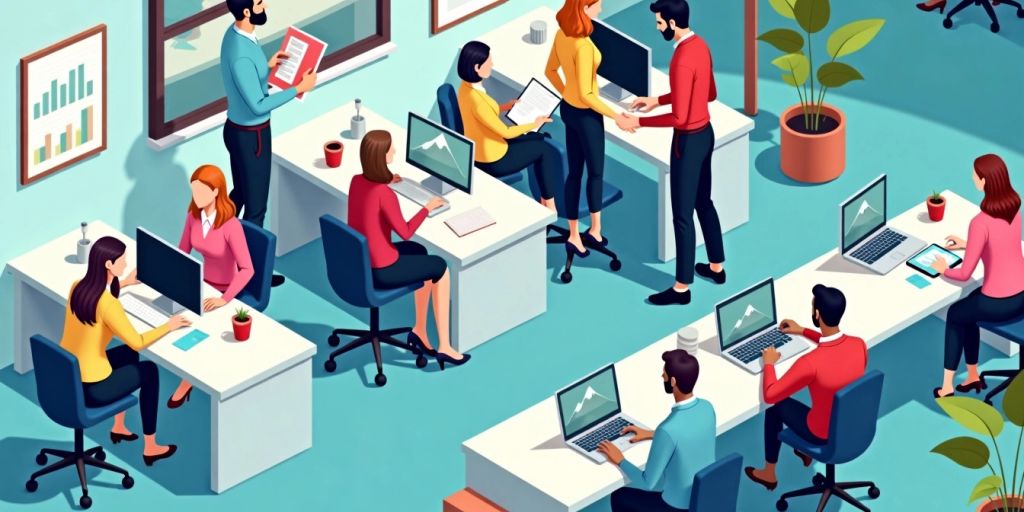Providing top-notch customer service is essential for any business aiming to thrive in today’s competitive market. This article explores practical strategies to create a customer-focused environment, train staff effectively, leverage technology, and maintain strong relationships with customers. By understanding and implementing these strategies, businesses can enhance customer satisfaction and loyalty, ultimately leading to success.
Table of Contents
ToggleKey Takeaways
- Build a culture centered around customer needs by gathering insights and acting on feedback.
- Invest in regular training for employees to equip them with the skills needed for outstanding service.
- Utilize technology like CRM systems and self-service portals to improve customer interactions.
- Optimize response times to ensure timely solutions to customer inquiries and complaints.
- Empower employees by recognizing their efforts and providing opportunities for growth.
Building a Customer-Centric Culture
Creating a customer-centric culture is essential for any business aiming for success. This culture places the customer at the heart of every decision. Here are some key strategies to build this culture:
Gathering Customer Insights
- Understand customer needs: Use surveys and feedback to learn what customers want.
- Identify pain points: Recognize areas where customers face challenges.
Shaping Strategies Based on Customer Feedback
- Incorporate feedback: Use insights to improve products and services.
- Align goals: Ensure that all departments focus on enhancing the customer experience.
Measuring Success with Customer-Centric Metrics
- Track satisfaction: Use metrics like Net Promoter Score (NPS) to gauge customer happiness.
- Review regularly: Consistently analyze data to refine strategies and improve service.
Building a customer-centric culture is not just about good service; it’s about understanding and delivering value at every touchpoint.
| Metric | Description | Frequency |
|---|---|---|
| Customer Satisfaction | Measures how happy customers are | Monthly |
| NPS | Gauges customer loyalty | Quarterly |
| Retention Rate | Tracks how many customers stay | Annually |
By focusing on these areas, businesses can create a strong foundation for exceptional customer service, leading to increased loyalty and satisfaction. Remember, the voice of the customer should always be heard!
Training and Development for Exceptional Service
Regular Training Sessions
To ensure that employees are equipped with the necessary skills, regular training sessions are essential. These sessions can cover various topics, including product knowledge, communication skills, and problem-solving techniques. By investing in training, companies can create a workforce that is ready to meet customer needs effectively.
Workshops and Coaching
In addition to training sessions, workshops and coaching provide hands-on experience. These interactive formats allow employees to practice their skills in real-life scenarios. Coaching can also help individuals refine their approach, leading to improved customer interactions.
Empowering Employees with Knowledge
Empowering employees with knowledge is crucial for exceptional service. When staff members understand the products and services thoroughly, they can assist customers more effectively. This empowerment can be achieved through:
- Comprehensive onboarding programs
- Access to updated resources and information
- Encouraging continuous learning through online courses
Investing in training and development not only enhances employee skills but also boosts morale and job satisfaction.
By focusing on these strategies, businesses can foster a culture of exceptional customer service that meets the demands of today’s market. Training and development are key to achieving this goal, ensuring that employees are prepared to deliver outstanding service at every interaction.
Implementing Technology Solutions

In today’s fast-paced world, using the right technology is key to providing excellent customer service. Technology can streamline interactions and make the customer experience smoother. Here are some important tools to consider:
Customer Relationship Management (CRM) Software
- A CRM system helps businesses manage customer data and interactions.
- It allows for personalized communication, which can lead to better customer satisfaction.
- Popular CRM tools include Salesforce, HubSpot, and Zoho.
Self-Service Portals
- These portals empower customers to find answers on their own, reducing wait times.
- Customers can access FAQs, tutorials, and troubleshooting guides.
- This not only saves time but also enhances the customer experience by providing instant support.
Omnichannel Communication Tools
- These tools allow customers to reach out through various channels like email, chat, and social media.
- Consistency across channels ensures that customers receive the same quality of service, no matter how they contact you.
- Examples include Zendesk and Freshdesk.
Implementing these technology solutions can significantly improve your customer service efficiency and satisfaction.
By integrating these tools, businesses can create a more responsive and customer-friendly environment. Remember, the goal is to enhance the customer experience while making processes easier for your team.
| Technology Type | Benefits |
|---|---|
| CRM Software | Manages customer data, personalizes service |
| Self-Service Portals | Reduces wait times, empowers customers |
| Omnichannel Tools | Ensures consistent communication across channels |
In conclusion, leveraging technology is essential for achieving world-class customer service. It not only helps in managing customer relationships but also in providing timely and effective support.
Investing in the right technology can lead to improved customer satisfaction and loyalty.
Optimizing Response Times
Automated Response Systems
To enhance customer service, businesses should consider implementing automated response systems. These systems can provide instant replies to common inquiries, ensuring that customers feel acknowledged right away. This is crucial because 66% of people believe that valuing their time is the most important aspect of online customer service.
Service Level Agreements (SLAs)
Establishing clear Service Level Agreements (SLAs) can help set expectations for response times. These agreements outline the maximum time allowed for responses to customer inquiries, ensuring that your team is held accountable. Here’s a simple table to illustrate typical SLA response times:
| Inquiry Type | Response Time |
|---|---|
| General Questions | 1 hour |
| Technical Support | 4 hours |
| Complaints | 24 hours |
Monitoring and Improving Response Times
Regularly monitoring response times is essential for continuous improvement. Businesses should track metrics such as:
- Average response time
- Customer satisfaction ratings
- Number of escalated issues
By analyzing these metrics, companies can identify areas for improvement and adjust their strategies accordingly.
Quick responses are key to customer satisfaction. However, it’s important to balance speed with quality. Customers appreciate thorough solutions, even if they take a bit longer to provide.
In conclusion, optimizing response times is a vital part of delivering world-class customer service. By utilizing technology, setting clear expectations, and continuously monitoring performance, businesses can significantly enhance their customer interactions.
Empowering and Engaging Employees
Recognizing and Rewarding Exceptional Service
Recognizing and rewarding employees for their hard work is crucial. When employees feel valued, they are more likely to provide outstanding service. Here are some effective ways to recognize exceptional service:
- Public Recognition: Celebrate achievements in team meetings.
- Incentives: Offer bonuses or gifts for outstanding performance.
- Employee of the Month: Highlight one employee each month for their contributions.
Soliciting Feedback from Frontline Staff
Frontline employees often have the best insights into customer needs. Listening to their feedback can lead to better service. Consider these methods:
- Regular Check-ins: Schedule one-on-one meetings to discuss challenges and ideas.
- Suggestion Boxes: Allow employees to submit ideas anonymously.
- Surveys: Conduct surveys to gather opinions on workplace improvements.
Creating Opportunities for Continuous Learning
Continuous learning helps employees grow and stay engaged. Here are some ways to promote learning:
- Workshops: Organize regular training sessions on customer service skills.
- Online Courses: Provide access to online learning platforms.
- Mentorship Programs: Pair experienced employees with newer staff for guidance.
Empowering employees leads to a more engaged workforce, which ultimately enhances customer satisfaction.
By focusing on these strategies, companies can create a culture where employees feel empowered and motivated to deliver exceptional service. This not only benefits the employees but also enhances the overall customer experience, leading to greater loyalty and satisfaction.
Highlight
- Corporate Social Responsibility: CSR has been credited with encouraging customer orientation among customer-facing employees.
Handling Customer Complaints Effectively

Training Staff to Handle Complaints
Dealing with complaints is a crucial part of customer service. Empathy is key when a customer reaches out with a problem. Staff should be trained to listen carefully and respond with understanding. Here are some important points to remember:
- Always listen to the customer without interrupting.
- Acknowledge their feelings and show that you care.
- Offer solutions that are fair and reasonable.
Maintaining a Positive Attitude
A positive attitude can change a negative experience into a positive one. When responding to complaints, staff should:
- Use friendly language and a warm tone.
- Avoid sounding defensive or dismissive.
- Remember that the customer is looking for help, not a fight.
Using Customer Feedback for Improvement
Every complaint is an opportunity to learn. Businesses should:
- Collect feedback from customers regularly.
- Analyze the feedback to find common issues.
- Make necessary changes to improve service.
By addressing complaints effectively, businesses can turn unhappy customers into loyal ones. This not only helps in retaining customers but also enhances the overall customer experience.
| Complaint Type | Response Time | Resolution Rate |
|---|---|---|
| Product Issues | 24 hours | 85% |
| Service Issues | 12 hours | 90% |
| Billing Issues | 48 hours | 80% |
Case Studies of Successful Customer Service Cultures
Zappos: Empowering Employees
Zappos is famous for its outstanding customer service. They focus on empowering their employees to make decisions that benefit customers. This approach creates a fun work environment where employees feel valued. Zappos believes that happy employees lead to happy customers.
Ritz-Carlton: Creating Memorable Experiences
The Ritz-Carlton is known for its exceptional service. They train their staff to go above and beyond to create unique experiences for guests. Employees are encouraged to take initiative and personalize service, which often leads to unforgettable stays for customers.
Lessons Learned from Leading Companies
These case studies show that a strong customer service culture can set a company apart. Here are some key takeaways:
- Empower employees to make decisions.
- Create a fun and engaging work environment.
- Focus on personalizing customer experiences.
A case study is an in-depth, detailed examination of a particular case within a real-world context. These examples highlight how prioritizing customer service can lead to success in business.
Explore how top companies create amazing customer service cultures that keep their clients happy and coming back for more. Want to learn more about boosting your own customer service? Visit our website for tips and tools!






